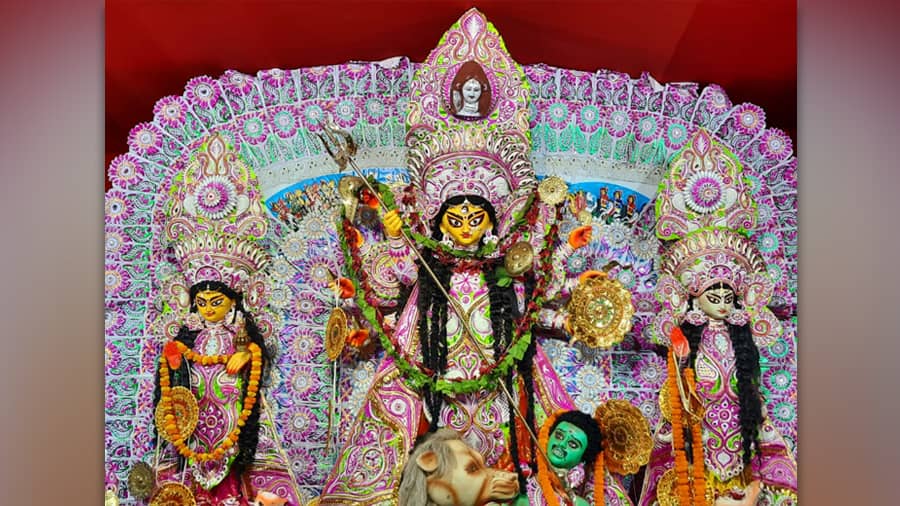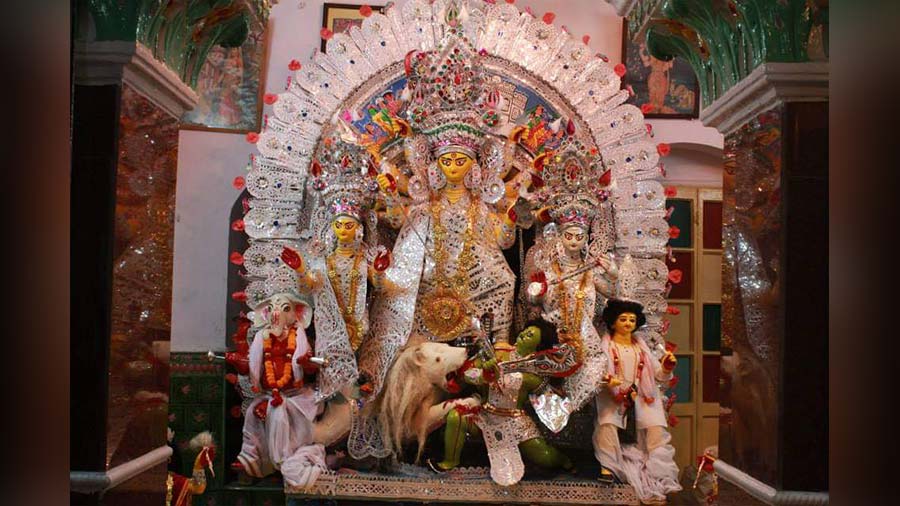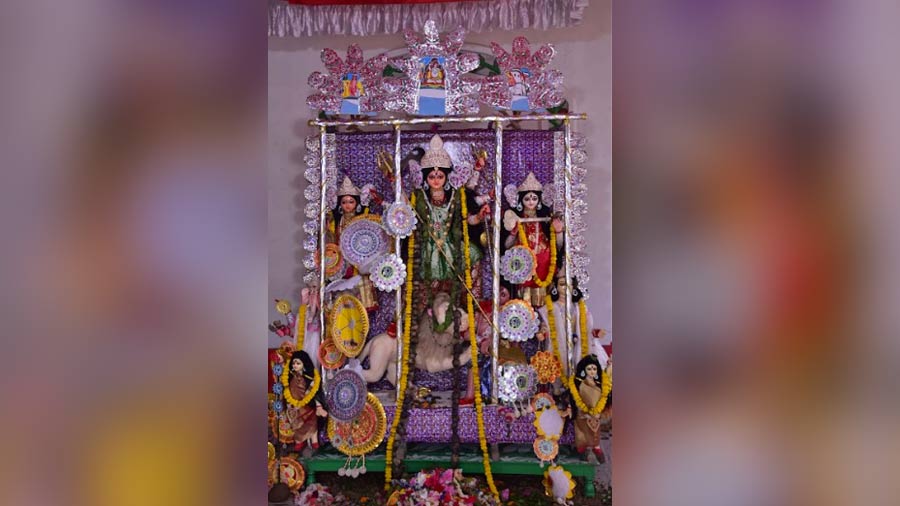About 100 years ago, when Tollygunge was very different from today, a family of Bramhins from Takipur village of Burdwan migrated here for business. Charuchandra Chatterjee, who went on to become a name to reckon with — with markets, roads and colleges named after him — got involved in a community puja near Lake Road, where he had initially settled.
After amassing huge wealth, Charu babu moved to a place on Bakhtiar Shah Road in Tollygunge. He purchased a huge mansion from a Marwari gentleman, who had acquired it from Tipu Sultan’s family in the early 20th century.
Meanwhile, knowing that the old community puja of Lake Road had stopped, Charu babu decided to restart the Puja in the family at the behest of his daughters and wife, Pankajini Devi. The famous puja of Tollygunge’s Chatterjee family is now nearly 95 years old, according to the family members.
Growing in stature
By that time, the family had already become well known in Calcutta’s social and political arena. Such was their influence that Charu babu’s son, Eshwar Debiprasad Chatterjee, who was born in 1916, later renamed Bakhtiar Shah Road after his mother.
Even today, the family puja of the Chatterjees is celebrated at Charuchandra Bhavan near Navina Cinema, where all four branches of the family come together to enjoy five days of unadulterated festivity.
The USP of this Puja is ‘women empowerment’. The family gives absolute liberty to its daughters and daughters-in-law and encourages them to handle the Puja their way. Most of the rituals are conducted by women and all married daughters of the family come over to enjoy the Puja.
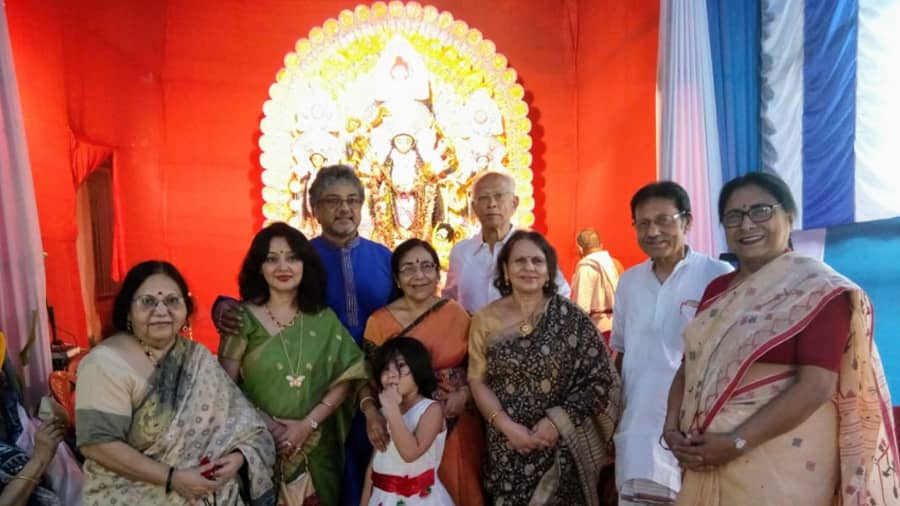
The women brigade at the Chatterjee family puja in Tollygunge
Daughter of the family, Padmini Bhattacharya, now 77 years old, recalls, “I was married in 1958, but I hardly missed a year of our family Puja, because from my teens I was taught how to conduct most of the vital rituals by my mother and kakis, who used to dominate this family festival during that time.”
The Puja is conducted at a makeshift pandal in-front of the family temple that enshrines an idol of Ananta Sayane Vishnu, which was brought from Jaipur many moons ago.
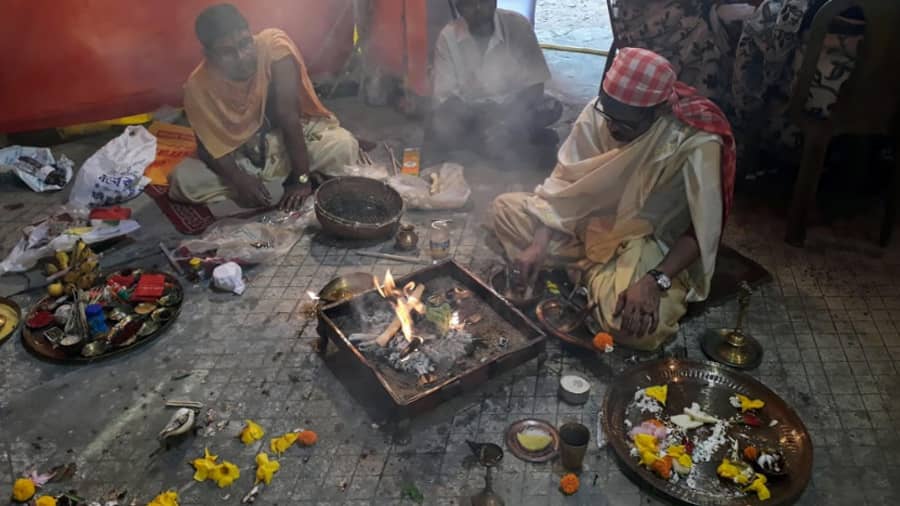
The Narayan shila is placed before Durga idol and is also worshipped along with the deities
After the kathamo puja is done on the day of Rath Yatra, the idolmaker starts his work on the premises. The idol generally gets completed before Panchami. The ekchala traditional idol is decorated with daker saaj, brought from their ancestral village of Takipur. The family priest arrives just before the puja with Narayan shila. The shila is placed before Durga idol and is also worshipped along with the deities. Earlier, the idol was decorated with gold ornaments, but now, due to security reasons, it has been discontinued.
The installation of nabapatrika, in the form of a banana tree, is done with a ceremony where many other trees and grains are also worshipped. The ritual dates back to ancient times when Durga was worshipped as the goddess of agriculture.
Bathing the goddess
The most spectacular ritual of this puja is perhaps the bathing of the Devi from Saptami to Navami. A copper tub is arranged and a mirror is placed in it, in such a way that the idol’s face reflects on the mirror. The tub is filled with about 60 different items — including milk, honey, rain water, sea water, chandan, go-mutra, coconut water, dahi etc. This ritual is done in front of eight metal mangal ghots, which are filled with sacred water.
Two tall diya stands are placed on both sides of the Devi and the flame doesn’t go out till the immersion. After the immersion, one of the diya stands is placed on the vacant stage.
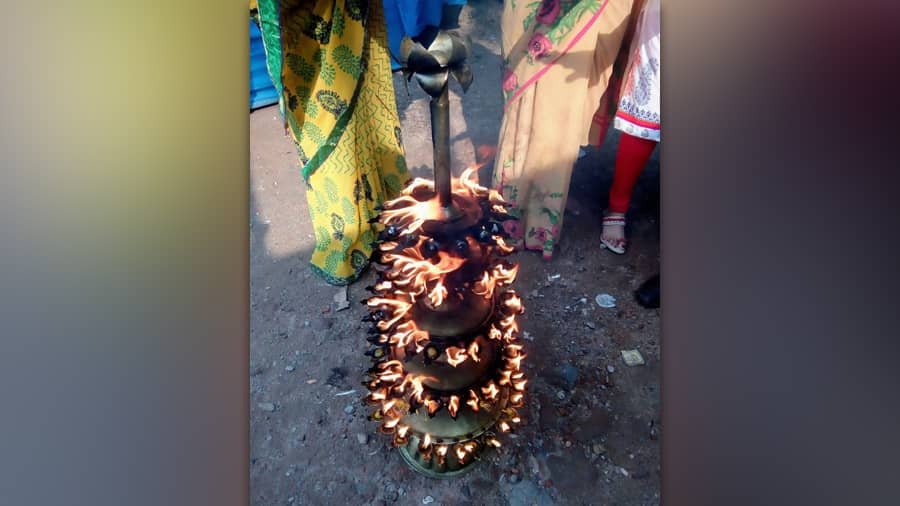
One of the diya stands is placed on the vacant stage after the immersion of the idol
The Devi is offered new saris every day, and on Ashtami, the goddess is offered even more saris, which are later distributed among the needy. There was never any tradition of animal sacrifice in the family. However, vegetables and fruits are sacrificed in a symbolic way.
Both cooked and non-cooked foods are offered as naivedya and the menu changes every day. On Saptami, it’s khichuri, vegetables and seven types of fried items, while pulao, posto, dal etc are offered on Ashtami and Navami. Non-veg items are not offered to the goddess.
An enthusiastic younger generation
Nearly 300 members of the family from across the country come together and enjoy the festivities. According to Amita Chakraborty, who has been a part of this puja since the 1960s, says, “Younger generations are very enthusiastic about this Puja. My son, who is doing his Phd in London, is here now to participate in the puja, which he has been doing since his childhood days.”
On Navami, many friends of the family and local residents are invited for lunch. Family members, both boys and girls, take part in dhunuchi naach on Navami evening.
Breaking barriers
The family does not stop at this. It even allows their widowed daughters and daughters-in-law to take part in the Puja festivities. They are even allowed to participate in Devi baran before immersion.
After immersion, family members are greeted with homemade mihidana and ghugni. The festival ends with a gala family feast on Dashami, where non-veg food is prepared.
“I am happy things are changing,” says Padmini Bhattacharya, a family member. “Earlier, the daker saaj was all in white, but now it is colourful. I find no wrong in this change because change is the only constant.”
